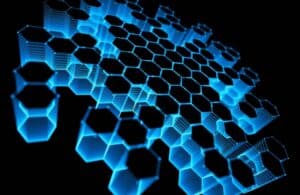The Science Blog

Stratospheric Aerosol Injection: A Last Resort for Global Warming?
The world is facing serious climate change challenges. Scientists are looking for new ideas to help reduce its impacts. Stratospheric aerosol injection (SAI) is one of the many strategies being considered. It’s a controversial but interesting choice. This method is a type of solar radiation management. It introduces aerosols into the stratosphere. These aerosols reflect some of the sun’s rays back into space. But is it truly a viable last resort for global warming, or are the geoengineering risks too significant to ignore? This blog explores SAI. It looks at its benefits, risks, and the current debate in climate science.
Key Benefits / Why It Matters
The concept of stratospheric aerosol injection is not entirely new. It takes inspiration from nature, like volcanic eruptions. These eruptions can cool the Earth for a short time. They do this by releasing sulphate aerosols into the air. The 1991 eruption of Mount Pinatubo, for instance, led to a global temperature decrease of about 0.5 degrees Celsius over the following year. This natural precedent shows that SAI might quickly cool the planet. This could give humanity vital time to shift to sustainable energy and cut greenhouse gas emissions.
Moreover, SAI could serve as a critical tool in managing the most severe impacts of climate change. As global temperatures rise, the risk of disasters like heatwaves, droughts, and sea-level rise increases. SAI can help stabilise global temperatures by reflecting solar radiation. This may prevent some serious consequences.
However, the implementation of SAI is not without its challenges. The technology for large-scale use is still new. We don’t yet know how it will affect weather patterns and ecosystems in the long run. Furthermore, the ethical and geopolitical implications of unilateral geoengineering actions raise significant concerns. These complexities highlight the need for thorough research and global teamwork to explore this climate solution.
Step-by-Step Guide / Actionable Insights

Understanding Solar Radiation Management
Solar radiation management (SRM) is part of geoengineering. It aims to reflect sunlight and lower global warming. SAI is one of the most discussed SRM methods due to its potential effectiveness and relative cost-efficiency. It’s important to know how it works and what effects it might have before thinking about using it.
The Science Behind SAI
SAI involves dispersing fine particles, such as sulphate aerosols, into the stratosphere. These particles scatter solar radiation. This action reduces the heat that the Earth’s surface absorbs. The process copies the natural cooling seen after volcanic eruptions. It provides a short-term drop in global temperatures.
The effectiveness of SAI relies on several factors. These include the type of particles used, their distribution, and the altitude of release. Current climate models show that SAI might lower global temperatures by 1-2 degrees Celsius. However, exact results are unclear because of the complex interactions in the Earth’s climate system.
Deployment Strategies
To use SAI worldwide, we need new technology and teamwork across countries. Various methods for dispersing aerosols have been proposed, including aircraft, balloons, and artillery. Each method presents unique challenges in terms of cost, efficiency, and environmental impact.
Using aircraft to release aerosols allows for precise control over distribution. However, it may need a lot of resources and infrastructure. Balloons might be cheaper, but they may not offer the precision needed for the best results. The choice of deployment strategy will depend on a careful look at the risks and benefits.
Ethical, Environmental, and Political Considerations
Environmental Impacts
SAI might help with climate issues in the short term, but it could also harm the environment. Studies show that stratospheric aerosol injection might change global rainfall patterns. This could cause droughts in some areas and more rain in others. Aerosols in the stratosphere can affect the ozone layer. This raises worries about the long-term health of our atmosphere.
Ethical Concerns
The ethical implications of geoengineering are profound. Who gets to decide if and when SAI is deployed? Unintended consequences can harm vulnerable groups. This raises worries about climate justice. Developing nations are often the most affected by climate change. They usually have little say in geoengineering decisions. This lack of input worsens global inequalities.
Geopolitical Challenges
The governance of SAI presents a major hurdle. SAI would affect the entire world, unlike local climate efforts. This means countries must work together like never before. Liability, accountability, and enforcement questions are still unclear. This uncertainty makes it hard to create a clear framework for responsible deployment.
Additional Expert Tips & Common Mistakes to Avoid
While SAI offers a potential avenue for mitigating global warming, it is not a panacea. Experts caution against viewing geoengineering as a substitute for reducing greenhouse gas emissions. It should be part of a wider climate strategy. This includes moving to renewable energy sources and improving carbon sequestration.
Best Practices for Responsible Research & Deployment
- Risk Assessments: Before big projects, thorough scientific checks should be done. These checks help evaluate possible effects on the environment and society.
- Transparency & Public Engagement: Involving the public and policymakers in SAI discussions helps address ethical issues. It also prevents one-sided decisions.
- International Regulations & Governance: It’s vital to create clear international agreements and rules. This helps prevent conflicts and ensures responsible actions.
Common Misconceptions
- “SAI Can Reverse Climate Change Completely”: SAI might lower global temperatures, but it doesn’t tackle the main issue—greenhouse gas emissions.
- “It Can Be Deployed Instantly”: Real implementation needs many years of research, planning, and building infrastructure.
- “SAI Would Have No Side Effects”: We must think about potential issues like climate change and ozone layer effects before moving forward.
Advanced Insights / Expert Recommendations
Experts suggest a careful and clear approach to SAI research and development due to its complexities and uncertainties. This involves strong public engagement and working with international partners. This way, all stakeholders stay informed and take part in decision-making.
It’s also important to invest in detailed climate models. This helps us understand how SAI might impact the world and specific regions. These models can spot risks and guide ways to reduce negative effects.
Experts stress the need to focus on cutting greenhouse gas emissions. While SAI may offer temporary relief, it does not address the root cause of climate change. Long-term solutions must prioritise sustainable practices and the transition to a low-carbon economy.
Stratospheric Aerosol Injection: A Risky Bet or a Climate Necessity?

Stratospheric aerosol injection represents a bold and controversial approach to addressing global warming. Geoengineering can cool the planet for a while, but we must consider the risks and ethical issues. The climate crisis is getting worse. We must explore all options carefully and responsibly.
The choice to pursue SAI should rely on solid scientific research, ethical factors, and teamwork across nations. We can help by promoting sustainable practices. We should support climate research and join conversations about our planet’s future.
In the face of uncertainty, one thing remains clear: the need for immediate and decisive action to combat climate change. We must work together to protect our planet for future generations. This can be done with new technologies like SAI or through traditional methods.









